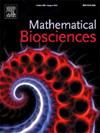Trophic flow of contamination: A nontrivial weapon for species coexistence
IF 1.8
4区 数学
Q2 BIOLOGY
引用次数: 0
Abstract
In the modern age of human-induced environmental changes, ecologists are increasingly alarmed about the potential disruption of ecosystems through toxicological processes. As humanity’s footprint on the natural world expands, understanding these dynamics becomes crucial. While recent ecotoxicology research has mainly focused on entirely contaminated ecosystems, overlooking the effects of aquatic contamination on terrestrial predators with access to uncontaminated prey, our study addresses this gap. We present a prey–predator model for partially contaminated communities, where predators face a trade-off in prey preference between contaminated and uncontaminated sources. Through mathematical analysis and numerical simulations, we uncover some interpretable findings: (1) In uncontaminated environments, predation pressure may cause the extinction of one prey species. However, when even a small contamination level exists in alternative prey, endangered prey species can coexist with others. (2) Survival under high contamination depends on the predator’s preference. A very low preference for contaminated prey trivially allows the predator to persist, while low or high preferences lead to the predator’s exclusion. Surprisingly, intermediate preference leads to bi-stability between contaminated prey and predator extinction equilibrium, resulting in a trade-off between the presence of contaminated prey or the predator. (3) Our results confirm the abrupt extinction of predators due to contamination, driven by bistability between predator-free and coexisting states. However, our observation reveals that the likelihood of sudden predator extinction increases with a higher preference for contaminated prey. Additionally, we explore the robustness of these outcomes by considering flexible model assumptions and alternative parameter sets. In summary, our study offers valuable insights into the ecotoxicological processes within partially contaminated communities, shedding light on direct and indirect species interactions.
污染的营养流动:物种共存的重要武器
在人类引起的环境变化的现代,生态学家越来越担心通过毒理学过程对生态系统的潜在破坏。随着人类在自然界的足迹不断扩大,了解这些动态变得至关重要。虽然最近的生态毒理学研究主要集中在完全污染的生态系统上,忽视了水生污染对陆地捕食者获得未污染猎物的影响,但我们的研究解决了这一空白。我们提出了一个部分污染群落的捕食者-捕食者模型,其中捕食者在受污染和未受污染的来源之间面临着猎物偏好的权衡。通过数学分析和数值模拟,揭示了一些可解释的发现:(1)在未受污染的环境中,捕食压力可能导致一个猎物物种的灭绝。然而,即使在替代猎物中存在很小的污染水平,濒危猎物物种也可以与其他物种共存。(2)高污染环境下的生存取决于捕食者的偏好。对被污染的猎物的低偏好可以让捕食者继续存在,而低偏好或高偏好则会导致捕食者被排斥。令人惊讶的是,中间偏好导致了受污染猎物和捕食者灭绝平衡之间的双稳定,导致了受污染猎物和捕食者之间的权衡。(3)在无捕食者和共存状态的双稳定性驱动下,污染导致了捕食者的突然灭绝。然而,我们的观察表明,捕食者突然灭绝的可能性随着对受污染猎物的更高偏好而增加。此外,我们通过考虑灵活的模型假设和替代参数集来探索这些结果的稳健性。总之,我们的研究为部分污染群落的生态毒理学过程提供了有价值的见解,揭示了直接和间接的物种相互作用。
本文章由计算机程序翻译,如有差异,请以英文原文为准。
求助全文
约1分钟内获得全文
求助全文
来源期刊

Mathematical Biosciences
生物-生物学
CiteScore
7.50
自引率
2.30%
发文量
67
审稿时长
18 days
期刊介绍:
Mathematical Biosciences publishes work providing new concepts or new understanding of biological systems using mathematical models, or methodological articles likely to find application to multiple biological systems. Papers are expected to present a major research finding of broad significance for the biological sciences, or mathematical biology. Mathematical Biosciences welcomes original research articles, letters, reviews and perspectives.
 求助内容:
求助内容: 应助结果提醒方式:
应助结果提醒方式:


